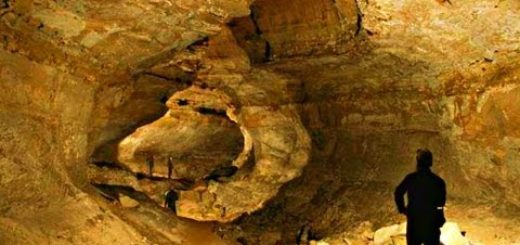Hundreds Of Ancient Man-Made Earthworks Challenge Current Knowledge About The Amazon Forest
– Over 2,000 years ago ancient people constructed hundreds of large, mysterious earthworks that are still little understood.
The true purpose of the ancient earthworks remains unsolved puzzle for now.

Archaeologists don’t think the earthworks were part of some villages because very few artifacts have been unearthed during excavations.
The layout doesn’t suggest they were built for defensive reasons. It is thought they were used only sporadically, perhaps as ritual gathering places.
Now, a recent study conducted by Brazilian and UK experts provides new evidence for how indigenous people lived in the Amazon before European people arrived in the region. The ditched enclosures, in Acre state in the western Brazilian Amazon, were concealed for centuries by trees. Modern deforestation has allowed the discovery of more than 450 of these large geometrical geoglyphs.
The structures are ditched enclosures that occupy roughly 13,000 km2. Their discovery challenges assumptions that the rainforest ecosystem has been untouched by humans.
“The fact that these sites lay hidden for centuries beneath mature rainforest really challenges the idea that Amazonian forests are ‘pristine ecosystems`.
We immediately wanted to know whether the region was already forested when the geoglyphs were built, and to what extent people impacted the landscape to build these earthworks,” Dr. Jennifer Watling, post-doctoral researcher at the Museum of Archaeology and Ethnography, University of São Paulo said.
Using state-of-the-art methods, the team members were able to reconstruct 6000 years of vegetation and fire history around two geoglyph sites. They found that humans heavily altered bamboo forests for millennia and small, temporary clearings were made to build the geoglyphs.
Instead of burning large tracts of forest — either for geoglyph construction or agricultural practices — people transformed their environment by concentrating on economically valuable tree species such as palms, creating a kind of ‘prehistoric supermarket’ of useful forest products. The team found tantalizing evidence to suggest that the biodiversity of some of Acre’s remaining forests may have a strong legacy of these ancient ‘agroforestry’ practices.
Dr. Watling said: “Despite the huge number and density of geoglyph sites in the region, we can be certain that Acre’s forests were never cleared as extensively, or for as long, as they have been in recent years.
“Our evidence that Amazonian forests have been managed by indigenous peoples long before European Contact should not be cited as justification for the destructive, unsustainable land-use practiced today. It should instead serve to highlight the ingenuity of past subsistence regimes that did not lead to forest degradation, and the importance of indigenous knowledge for finding more sustainable land-use alternatives.”



 Creators of mankind
Creators of mankind Description of “Tall white aliens”
Description of “Tall white aliens” Where they came from?
Where they came from? About hostile civilizations
About hostile civilizations The war for the Earth
The war for the Earth “Tall white aliens” about eternal life
“Tall white aliens” about eternal life Video: “Nordic aliens”
Video: “Nordic aliens” Aliens
Aliens Alien encounters
Alien encounters The aliens base
The aliens base UFO
UFO Technology UFO
Technology UFO Underground civilization
Underground civilization Ancient alien artifacts
Ancient alien artifacts Military and UFO
Military and UFO Mysteries and hypotheses
Mysteries and hypotheses Scientific facts
Scientific facts


















